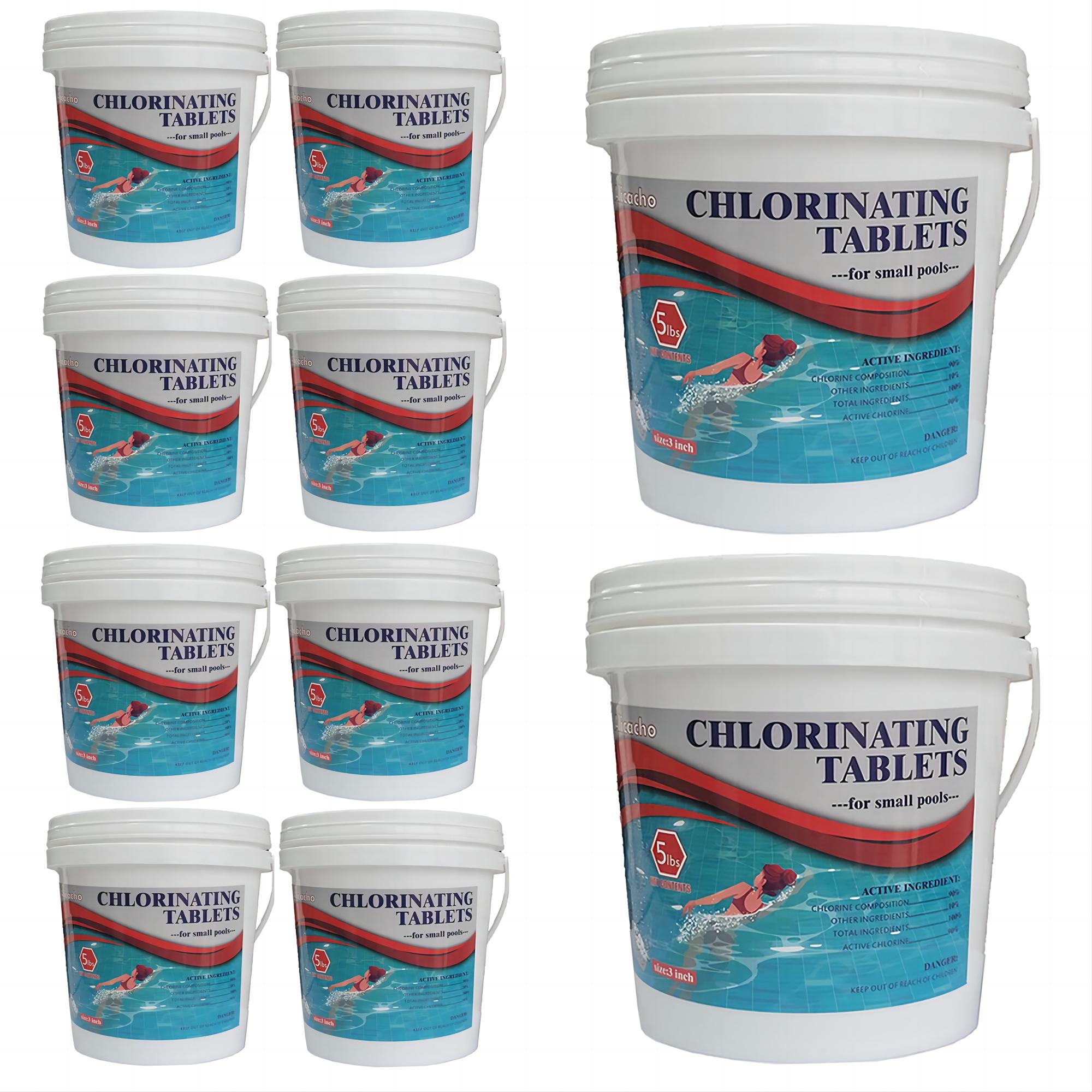As a pool owner, it is a must that you have ideas about algae as well as solutions to get rid of it. This is why, in this article, we will know more about mustard algae in pool. There is nothing to worry about, mustard algae in pool can be prevented and can still be fixed. Once you follow the steps on how you fix it, it is possible to enjoy clean, safe, and healthy pool water.
Mustard algae in pool also called yellow algae is not good for the quality of your pool water. Once there is too much mustard algae in pool, it can lead to high levels of deadly bacteria such as E.coli which is bad for bathers and this is the very reason why the issue must be acted upon as soon as possible.
Part 1. Getting To Know Mustard Algae Better
Mustard algae in pool can easily be spotted physically. It is one of the close relatives of green algae. You can see it as yellowish, sometimes brown or yellow-green which is also slimy. Some bathers or pool owners mistakenly classify it as dirt or sand, and can usually be seen in bathing suits, pool toys, pool surfaces, wall fittings, ladders, and even light fixtures.
Pools that are located in locations that have warm climates usually encounter this dilemma. It is also one of the most common problems usually faced by pool owners, once it is not taken care of immediately, most of the parts of your pool can be infested. It is also important for you to know that mustard algae in pools is resistant to chlorine, and the ways to get rid of it can be difficult once it has finally built a home in your pool or spa.
It is surely easy to get brush of mustard algae in pool, but to completely get rid of it can be a little too tricky. You can wash off all the mustard algae in pool that you see off the surface of your pool, however, the procedures must be executed well so that you can be sure that it will not resurface or return once more.

Part 2. Ways To Prevent Mustard Algae In Pool
Before we discuss ways to get rid of mustard algae in pool, we should first learn how to prevent it from infesting our pool water. This is one of the good things about mustard algae in pool, as long as we practice and follow proper ways to be able to get rid of it, many pools will remain free from it. So, what can we do to prevent mustard algae from infesting our pool waters?
1. Make Sure the Filtration System of Your Pool is Working Properly.
Once there is improper filtration, the possibility of impurities building up is high. Once the level of impurities is too high, mustard algae will have the possibility to grow. It is a must to run your filtration system for at least 12 hours per day, you can also try the 24-hour action of water circulation through the use of efficient variable speed pumps that are readily available in the market today.
2. Always Apply Sanitizers to Your Pool.
You have to monitor the level of sanitizers that are being applied to your pool water.
3. Make Sure that You always Clean the Surfaces of Your Pool.
You have to keep the walls and floors of your pool sparkling clean. You have to regularly brush and vacuum its surfaces, properly brushing the surfaces of your pool is important to prevent spores of mustard algae from starting to colonize your pool’s surfaces.

4. Start to Use Algaecides.
We all know that to be able to get rid of algae we have to use algaecides. This will also prevent them from growing and is also an effective way to immediately kill and aid algae infestation. You have to read the instructions found in the container of the products that you use and make sure to apply them accordingly.
5. Maintain Proper Water Circulation.
To move your water in the filter, proper circulation is essential. It can remove debris and particles in your pool. Also, when there is no proper water circulation, there are lots of systems in your pool that won’t function properly like added chemicals, your filtration system, and the sanitation system for spas as well.
6. Always Check the Cleanliness of Your Filter.
Aside from making sure there is proper water filtration and circulation, you also have to maintain the cleanliness of your filters. To make sure your spas and pools are clean; you can execute backwashing. However, in backwashing your pools, you also have to make sure that you have correctly read through the manual of your manufacturer for further recommendations. Regular backwashing must be conducted especially if your pools are exposed to lots of organic matter every day.
7. Keep Your Water Chemistry Balanced.
One of the keys to maintaining a healthy, safe, and clean pool is to also keep its chemical levels balanced. To do this, there are recommended levels for each of the pool components or chemicals, these level ranges are:
- Alkalinity- the level must be maintained between 60 and 120 ppm.
- Calcium Hardness- for plaster pools must be in the range between 200 and 400 ppm, and for fiberglass or vinyl liner pools level must be in the range between 150 and 250 ppm.
- pH- 7.2 to 7.4
- Cyanuric Acid- ranges between 20 and 40 ppm for outdoor pools.
- Phosphates- must be 200 ppb or less
- Total Dissolved Solids- must be 1500 ppm or less and if you have saltwater pools level must be 4500 ppm or less.
These are only some of the things that you can always include in your pool maintenance checklist to be able to make sure that mustard algae can’t be able to grow in your pool.
Part 3. How Do I Get Rid of Mustard Algae In Pools?
Now that you have learned how to prevent mustard algae in pools from growing or occurring, this time we are about to learn different fixes that anyone can execute to treat existing mustard algae in pool. Although it is a dilemma that can easily be fixed, it is still something that you have to put your attention to, it is an issue that must be addressed as soon as possible. This will protect not just the pool and its equipment but also the people who patronize your pool every season of the year!
To fix mustard algae in pool, you can execute the different fixes below.
1. Brushing and Vacuuming the Surfaces of your Pool.
Well, if you have already noticed mustard algae in the bottom parts of your pool, you can immediately turn off your water pump, and start brushing the surfaces of your spas and pools. Once you are finished brushing, you can now start vacuuming said surfaces to remove the debris of mustard algae that had possibly fallen onto the floor of the spa or pool. Once you are finished brushing, it will make the mustard algae easy to kill through shocking the pool and remove through the use of a vacuum. You can use a wire bristle brush, make sure that it would not damage your plaster, and if you have fiberglass or vinyl liner pools, you need to use nylon brushes only. You also have to check your filter since mustard algae can also live on it, and perform backwashing or filter cleaning to remove the algae in the filter.
2. Removing and Washing Floats, Pool Toys.
You can now start removing all the pool accessories, pool floats, and toys that are connected to your pools. These are also some of the common areas where mustard algae will latch into, so you have to make sure you remove them for thorough cleaning. In case these items are not cleaned properly, they can reintroduce spores to your pool water, and mustard algae can be able to grow once more. You can use a multipurpose cleaner to disinfect your items infested with mustard algae, so you won’t destroy them. You are also advised to be extra careful in cleaning your items using cleaners with high bleach concentrations or bleach itself since it can cause discoloration. You can use color-safe detergents for your bathing suits to be able to kill the spores of mustard algae on them.
3. Test and Balance the Water Chemistry of Your Pool.
Then, you can now get your testing strips to make sure that your pool water chemistry is well-balanced. Once your pool or spa has balanced water chemistry, it can ensure that chlorine shock is set up for optimal performance. If you have outdoor or indoor pools, you can use trichlor, just make sure that your CYA or cyanuric acid is within the accepted range which is the range between 20 and 40 ppm.
4. Super-Chlorinate Your Spas and Pools.
The next step is to execute super chlorination which is also called shocking. It is a process where you will add almost ten times the normal chlorine level that you are adding to your pools. Once there is too much chlorine in your pools, through super chlorination, it can burn up chemicals, oils, and resistant compounds, as well as types of algae that are too strong. To ensure the effectiveness of this process, you need to shock your pool water at night, and you also have to leave your pump and filter running 24 hours a day until you notice that the mustard algae is finally gone. Always check the instructions of the container of the pool shock that you are going to purchase before using it.
5. Clean and Balance Your Pool Water for Days.
Once you are done with super chlorination, you can now continue with water testing and balancing for a few days. You have to make sure everything will be back into balance since you have added a strong dose of chlorine into your pools. In case you see a re-occurrence of mustard algae, you have to repeat the process from the start until everything is finally cleared off. In the end, you can also apply a proactive algaecide to prevent mustard algae from reoccurring.
Part 4. FAQs
1. Is it Harmful to Swim in a Pool with Mustard Algae?
Well, mustard algae is not harmful to humans, however when there is already excessive growth of it, harmful bacteria like e.coli can be attracted. They can also cause cloudiness or haziness in the pool water and will also leave stains on the walls and floors of the pool. Also, this type of algae tends to hang in the bottom of the pool, and in its walls as well.
2. Can Mustard Algae Live Out of the Water?
Yes, they can live even not in the water. It is easy to kill however it still has spores that can remain viable for months. This means that even with the water, the pool is still in a tight spot since it is still exposed to spores.
3. How Would You Know if the Mustard Algae in the Pool is Already Dead?
Well, there can be physical indications to know if the mustard algae in pool is already dead. You can also check your filter to check any possible algae that were filtered out. Also, killed mustard algae in pool usually settles at the bottom of the pool, and is grayish or brownish in physical color.




